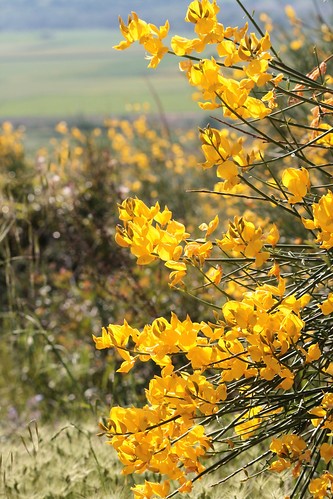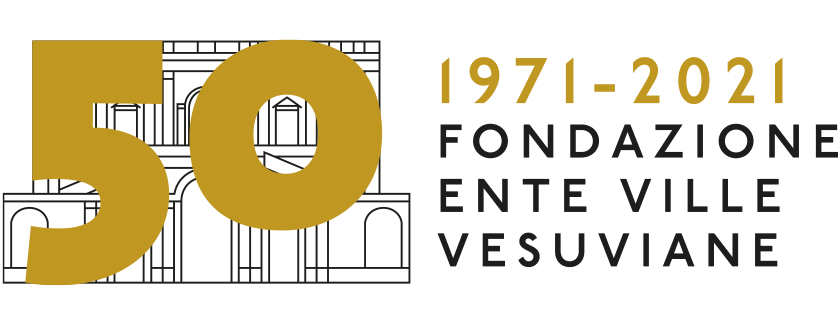Ticket details

Ticket that includes the visit of Villa delle Ginestre located along the Golden Mile, in the municipality of Herculaneum.
What to expect
Villa delle Ginestre

HERE ON THE ARID BACK
OF THE FORMIDABIL MONTE
STERMINATOR VESEVO
GIACOMO LEOPARDI
He wrote
THE GINESTRA AND THE SUNSET OF THE MOON
Villa delle Ginestre
At the foot of Vesuvius, in a splendid panoramic position, dominated on one side by the power of the volcano and on the other by the Gulf of Naples, stands Villa delle Ginestre which hosted Giacomo Leopardi in the last years of his life.
The Villa was built at the end of the seventeenth century by Canon Simioli who used it as a summer residence, often hosting important personalities of the Neapolitan culture such as Luigi Vanvitelli who probably designed the staircase leading to the upper floor. Later the residence was inherited by Simioli's niece who married Diego Ferrigni. From the marriage was born Giuseppe Ferrigni who in 1826 married Enrichetta Ranieri, sister of Antonio, a close friend of Leopardi. It is at this moment that the destinies of the villa intersect with those of the Poet: Ferrigni placed at Leopardi's disposal the dwelling which, in the mildness of the climate, would offer comfort to his poor health. Thanks to Ferrigni, a politically committed lawyer and magistrate, founder of the authoritative Minerva Napolitan periodical of Neapolitan constitutionalism, a person with vast cultural interests, particularly philosophical and literary, Leopardi was able to be surrounded by a lively intellectual environment.

The current name of the Villa refers to one of the two poems composed by the Poet in this residence: La Ginestra precisely, and the Sunset of the moon. Around 1847 the Ferrigni family moved to Naples and the Villa resumed its function as a summer residence. At the end of the nineteenth century, a nephew of Giuseppe Ferrigni married Adelaide Leopardi, great-granddaughter of the Poet and they lived for a short time in the Villa where the young bride died. In 1907 the Villa was inherited by Antonio Carafa, great-grandson of Giuseppe Ferrigni. The renovation of the residence dates back to that period with the creation of the portico on three sides to support the upper terrace, giving the Villa its current appearance. In 1937, in the presence of King Vittorio Emanuele III, the villa was proclaimed a National Monument with the affixing of a commemorative plaque.
The Villa has been owned by the Federico II University of Naples since 1962. Currently the management and enhancement of the site is entrusted to the Ente Ville Vesuviane Foundation which has created a museum itinerary that enhances the visit to the room that housed the poet where the structure and the historic furniture are kept. The narration of Leopardi's Torrese and Neapolitan stay follows in the other rooms on the first floor by means of audio-visual languages capable of presenting themselves to the student as to the traveler.
the broom or the desert flower

Here on the arid back
Of the formidable mountain
Exterminator Vesevo,
Which nothing else is cheerful arbor or flower,
You scatter around your solitary tufts,
Smelling broom,
Happy with the deserts. I still saw you
Your stems will embellish the herm district
That encircle the city
Who was once a woman of mortals,
And of the lost empire
It seems with a grave and taciturn aspect
Faith and remember the passenger.
Ville Vesuviane

Tourism in the name of Beauty
The territory of the municipalities of Naples, San Giorgio a Cremano, Portici, Herculaneum and Torre del Greco is adorned with 122 monumental buildings, the so-called Vesuvian Villas. The targeted interventions of the “Vesuvian Villas Institution”, now a Foundation, in the past fifty-five years have restored a new dignity to the immense heritage of the Baroque Villas of the 18th century.
In 1738, Charles of Bourbon and his wife, Mariamalia of Saxony, chose Portici as the perfect place to build a new palace and to begin the excavations of the Roman city of Herculaneum. From that moment all the Neapolitan nobles followed the court of the Bourbons and raised some villas for their summer stays in the coastal area at the slopes of the Vesuvius, creating the architectural complex of the 122 “Vesuvian Villas” that is unique in the world for its vastity and its beauty.
The concentration of the “Vesuvian Villas” in the area within the borders of the municipality of Herculaneum intensified so much that it became a sort of particular prestige and it took the name of the Golden Mile. In fact, the Vesuvian Villas that run along that stretch of road can be compared to stunning monuments enriched with vast gardens and pictorial decorations made by great artists. They were designed and built by renowned architects such as Luigi Vanvitelli, Ferdinando Fuga, Domenico Antonio Vaccaro, Ferdinando San Felice.
Some of these monumental buildings, such as “Villa Campolieto”, the Sea Park of “Villa Favorita” and “Villa Ruggiero” in Herculaneum and “Villa delle Ginestre” in Torre del Greco, after a careful and rigorous restoration, are currently under the direct protection and management of the Ente Ville Vesuviane Foundation. They constitute the venues where the institutional activity takes place and countless cultural events and initiatives are carried out.
Features
you always have these benefits included
How to reach the property
Villa delle Ginestre
Via Villa delle Ginestre, 19 - 80059 Torre del Greco (NA)
Pinch and drag for more details
Walk 1.5km, 21 minutes
Free indoor parking
The opening hours of the structure
Online ticket office contacts
Structure contacts


